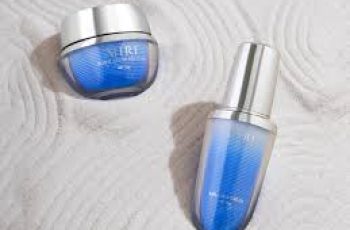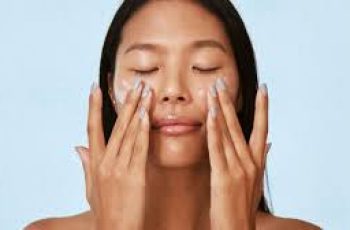Can I use Niacinamide after using a glycolic acid toner?
The problem with skin care is that everyone has a different skin type. Combine that with the plethora of different products and ingredients available, and it can sometimes feel like a never-ending battle. Especially if you’re still trying to navigate and figure out which ingredients to layer on and which ones to avoid.
So with that in mind, let’s take a closer look at whether or not you can use Niacinamide after using a glycolic toner. Before we dive in, let’s quickly summarize what glycolic acid and niacinamide do for your skin.
What are the benefits of glycolic acid?
Extracted from sugar cane, it’s artificially produced for inclusion in skincare products.
One of the most commonly used acids in the chemical peel family, the so-called alpha hydroxy acid (AHA)
Removes dead skin cells from the outer surface of the skin
Active ingredients fight breakouts like blackheads, blemishes, and acne
Restores a dull, lackluster complexion by removing dead skin cells, bacteria, dirt, and other impurities
Fine lines and wrinkles are visibly reduced, and overall skin tone improves
Skin becomes more receptive, allowing other formulas to penetrate deeper
For more information on the benefits of glycolic acid for the skin, visit Beauty Insider.
What are the benefits of niacinamide?
Niacinamide is a form of vitamin B3 that is not only found in skincare products, but also in dietary supplements.
It contains humectant properties that allow the ingredient to attract water and hold it to the surface of the skin.
It regulates sebum production, making it an extremely useful ingredient for those with oily and blemish-prone skin.
It helps balance the skin barrier and ensures there is enough oil and water to fight the effects of free radicals such as pollution, UV rays, and other environmental aggressors.
It helps reduce the overproduction of melanin in the skin, thereby reducing signs of dark spots and hyperpigmentation.
Do you want to learn more about niacinamide and its effects on the skin? Read our special blog post.
Does glycolic acid come before niacinamide?
Yes and no, I mean it depends a lot on the formulation of the product containing these active ingredients. The general skin rule is to start with the thinnest and work your way up to the thickest.
You’ll find both niacinamide and glycolic acid in many skincare products. However, many recommend using glycolic acid before niacinamide. This is because AHAs exfoliate the skin and remove the barrier of dead skin cells on the surface. This allows other products to be fully and effectively absorbed into the skin.
Remember to allow enough time between applications so that the pH of the skin can rebalance. Not only will you avoid unwanted skin reactions, but both active ingredients will also work optimally. Mixing these ingredients together may cause adverse skin reactions such as redness, rashes, itching, discomfort, and flaking skin.
What to use after glycolic acid toner?
After using a glycolic acid toner, it’s best to use a serum that’s rich in hydrating ingredients like hyaluronic acid. Although glycolic acid is very effective at exfoliating, it can sometimes cause minor irritation, no matter how much tolerance your skin has built up. To combat this, it contains a formula rich in nourishing and hydrophilic ingredients that strengthen the skin barrier. This will keep your complexion radiant while being protected, especially when you complete your morning skincare routine with a daily SPF of 30 or higher.
What shouldn’t be used with glycolic acid toner?
You can use any type of glycolic acid ingredient if you layer your products correctly. Just leave it on for about 20 to 30 minutes to allow your skin’s pH to rebalance, or alternate glycolic acid products with other ingredients like salicylic acid, vitamin C, niacinamide, or even retinol. If you want to learn more about what not to mix with glycolic acid, you can read more in our blog.
Which is better, niacinamide or glycolic acid?
Both ingredients have different benefits for the skin. So, to determine which is better, you need to consider your skin care goals. If you find that your complexion looks dull, you’re prone to frequent breakouts, or you have signs of premature aging like fine lines and wrinkles, this may lead you to consider using both ingredients. The easiest step to consider is your skin type and how sensitive it is. By doing a patch test on your skin before applying the product all over your skin, you can determine which ingredient is best for you and your skin.
How to use niacinamide with glycolic acid?
This depends on your skin care routine and the products you use. The most important thing is not to stack these ingredients together, as this can cause skin irritation and reactions. As already mentioned, you should leave enough time between applications to avoid unwanted side effects.
These are some more details on whether you can use niacinamide after a glycolic acid toner. Remember: if you have questions about using new products or formulas on your skin, consult your doctor or dermatologist to find the best formula for you. If you have any other skincare questions, don’t forget to follow Procoal’s Instagram account. You can reach me or one of the skincare experts in a private message. I look forward to seeing you there!
DQH Can I use salicylic acid first and then vitamin C?
It’s easy to create a skincare routine, but knowing how to use it is another thing entirely. In most cases, if you’re not getting the desired skin results, it could be due to the layering of conflicting ingredients. So, is it possible that salicylic acid and vitamin C are such ingredients? Or are these active ingredients the duo that’s been missing from your skincare routine? If you want answers, stick around because today we are going to explain the benefits of salicylic acid and vitamin C and how they can be used in your daily life.
What are the benefits of salicylic acid for skin?
Salicylic acid is one of the most commonly used beta hydroxy acids and is favored by many people with oily, acne-prone skin. This acid is derived from willow bark, and unlike its water-soluble relatives (called alpha-hydroxy acids), salicylic acid is oil-soluble, which means it can penetrate deeper into the lower layers of the skin. Once it reaches the lower layers, it can help unclog pores of excess sebum, dirt, bacteria, debris, and impurities. This results in clearer skin tones and greater definition.
Not only does salicylic acid benefit the underlying layers, but the outer surface of the skin benefits as well. When applied to the skin, salicylic acid removes the buildup of dead skin cells. This is accomplished by breaking the bonds that hold dead cells to the surface. Over time, this can cause the complexion to look dull and prone to acne, blackheads, and other blemishes.
If you’d like to learn more about salicylic acid and how it can improve your skin, check out this dedicated blog post from a beauty insider.
What are the benefits of vitamin C for skin?
Vitamin C is considered one of the most powerful antioxidants, which means it is very effective at fighting free radicals and preventing them from causing further skin damage. Examples of free radicals include pollution, central heating, UV rays and harsh climate. They attack proteins, fats and cell membranes as soon as they come into contact with the skin, causing signs of premature aging such as fine lines and wrinkles as well as hyperpigmentation, flaky patches of skin and loss of elasticity.
Many people usually prefer to use vitamin C in their morning routine as this ingredient gives the complexion a radiant glow. You’ll also find that vitamin C can target areas of hyperpigmentation, plumping the skin and reducing the appearance of fine lines and wrinkles.
The thing about vitamin C is that there are a lot of outdated studies going back to the 1950s that describe vitamin C as an unstable skin component. Thanks to improvements in modern technology, this is no longer the case as all products now contain a stable form of vitamin C.
Visit The Beauty Insider to learn more about vitamin C. So please check out our blog post.
Can I use salicylic acid first and then vitamin C?
Yes, you absolutely can. In fact, it’s thought that using salicylic acid before using vitamin C ensures it penetrates faster and works faster.
This is an efficient way to utilize two power sources, and the reason has to do with pH. For example, the skin’s natural pH is about 4.7, making it slightly acidic. Salicylic acid and vitamin C are also both acidic, and you’ll find that vitamin C is absorbed quickly into the skin. Therefore, using salicylic acid beforehand can increase the acidity of the skin and allow vitamin C to penetrate into the skin faster.
While this is considered an effective way to combine two powerful ingredients, you need to be aware of your skin type and how it reacts to certain active ingredients. Even people with perfect, normal skin can experience skin sensitivity and irritation. Therefore, always consult a doctor or dermatologist before using any new products on your skin.
It’s also important to follow skin application rules. In this case, you need to use the product correctly to ensure you get the best results for your skin. If you’re not sure what I mean, the basic rule for skin is to start with the thinnest consistency and work your way up to the thickest consistency. This prevents a barrier from forming on the surface, preventing other active ingredients from penetrating the skin.
Can I use salicylic acid at night and vitamin C in the morning?
Yes, absolutely, this is considered the most effective way to get returns without any adverse side effects. This is because there is enough time between applications to ensure that the skin’s pH levels return to balance.
You’ll also find that Vitamin C is rich in antioxidants and is perfect for use in the morning to ensure your skin is protected and looking its healthiest. Due to the small size of salicylic acid molecules, it is an acid that is able to reach the deepest parts of the skin. While this is effective at keeping skin clear, it also increases the risk of irritation and photosensitivity. Therefore, many people prefer to use powerful BHAs in their evening routine without exposure to UV rays, pollution, or harsh weather.
Warning: If you avoid using sunscreen every day, none of these ingredients will do what your skin needs. The combination of chemical peels and powerful ingredients increases the risk of further damage to the skin’s surface. Use SPF 50 every day to keep your skin protected and your lipid barrier healthy, even on cloudy days, keeping your skin in top condition.



